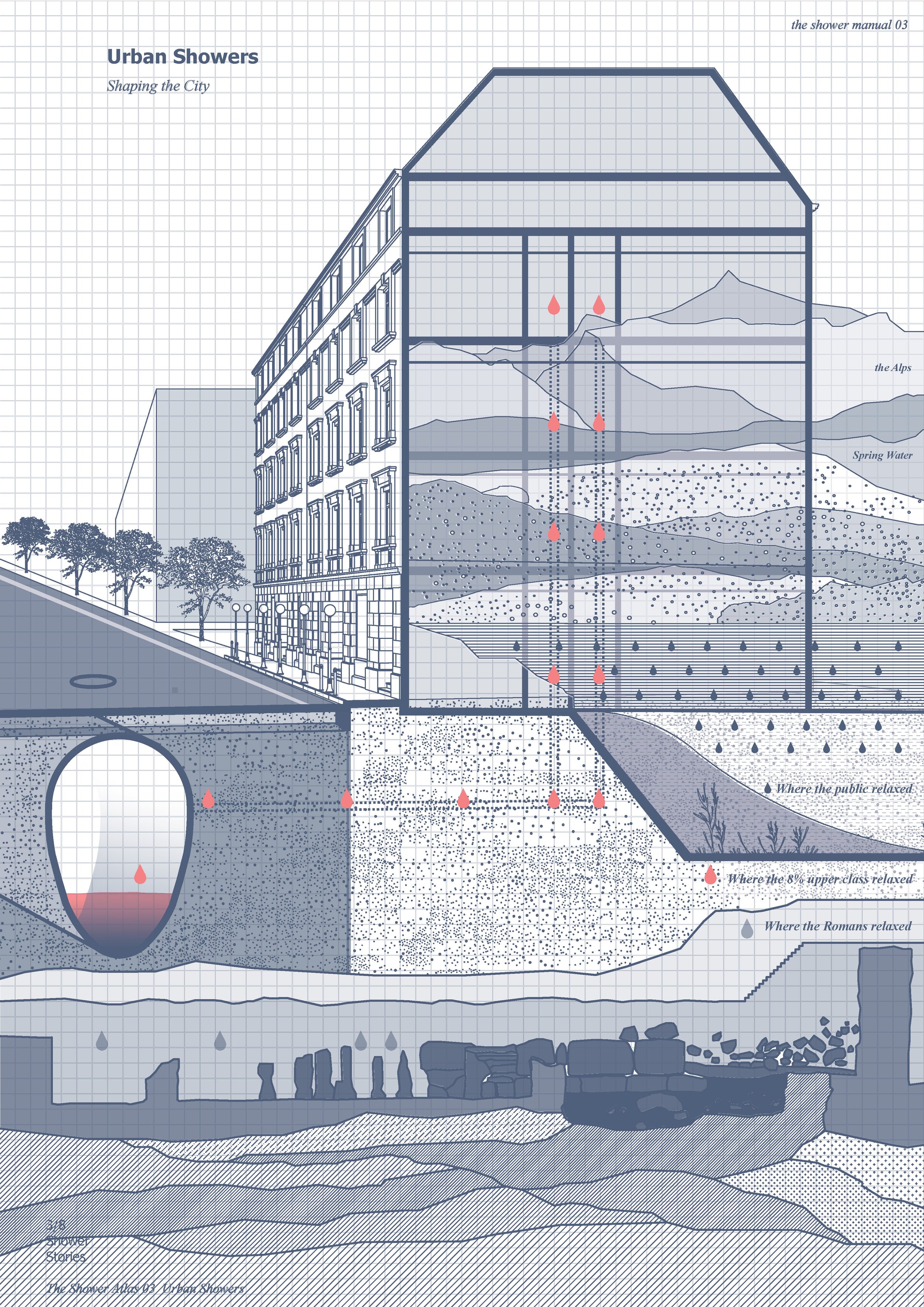the shower atlas
The shower is a practice. The shower is also a space. A space occupied by the citizen through time. The shower is a site specific activity that involves the practice of cleansing within a distinctively designed and dedicated space. The verb to shower has preceded the shower as a noun along the times of human existence and urban development. Showering in the shower has only been recently introduced after showering beneath a water fall, in a natural waterbody, at the local baths, and in public shower rooms has been exhausted as a cleansing space while the shower gets privatized as an urban event. Showering has always been a cleansing practice. However, the shower space hasn’t always been dedicated solely for cleansing. It has taken part of social, cultural, and spiritual events where it was practiced as an activity by the masses and not only the wealthy in Ancient Greece.
The Shower Atlas situates the shower, both noun and verb, within the urban context of Zurich and navigates the user through the shower space and practice as it transforms spatially and functionally to become the shower that we use today. As bathing practices have evolved through time, and the shower has been privatized and rationalized as a space, The Shower Atlas challenges the idea of the shower as a purely functional space, by highlighting its importance and the urgency of integrating it as a practice stitched within the urban spaces as well as the urban schedules of our daily lives. The Shower Atlas takes Zurich as the perfect example of the shower, as a space and as a practice that has withstood the challenges and pollution of the years of industrialisation while maintaining 10 of its baths to remain as a shower space and as a shower practice along the Limmat River and the Lake Zurich (Chen et al. 42). One could argue that cities were first built around bodies of water, or the shower. The shower, or the river, was once a central spatial bathing element within a city. Why was the shower privatized? What made it lose its importance in the urban schedule to become purely functional? The Shower Atlas progresses from the macro urban scale to the micro scale of the intimate bathroom. It moves from a social to an extremely personal space as it alters perceptions of the human body within society and the city. Acquiring new forms, characteristics, and modes along its transformation, the shower maintains its tight connection to the city as it is both the product as well as the designer of a city.
The Shower Atlas is the beginning of a contemporary city shower that argues for the increased accessibility and integration of showers in public zones, shared spaces, and urban schedules leading to a surge of creative, social, efficient, and productive spaces within the city. Shall we then regard the shower as a catalyst in the 24/7 city? Does it propose a 24/7 schedule of relaxation, solitude, and zero distraction? Or is it a generator of productive and efficient labour force within a city? The Shower Atlas is a social experiment that stretches the capabilities of the shower space beyond its contemporary, habitual, and almost surpassed implications. It calls for the integration of the shower as a celebratory urban event that is not only witnessed by the four walls of a shower but also by the greater walls of a city.







